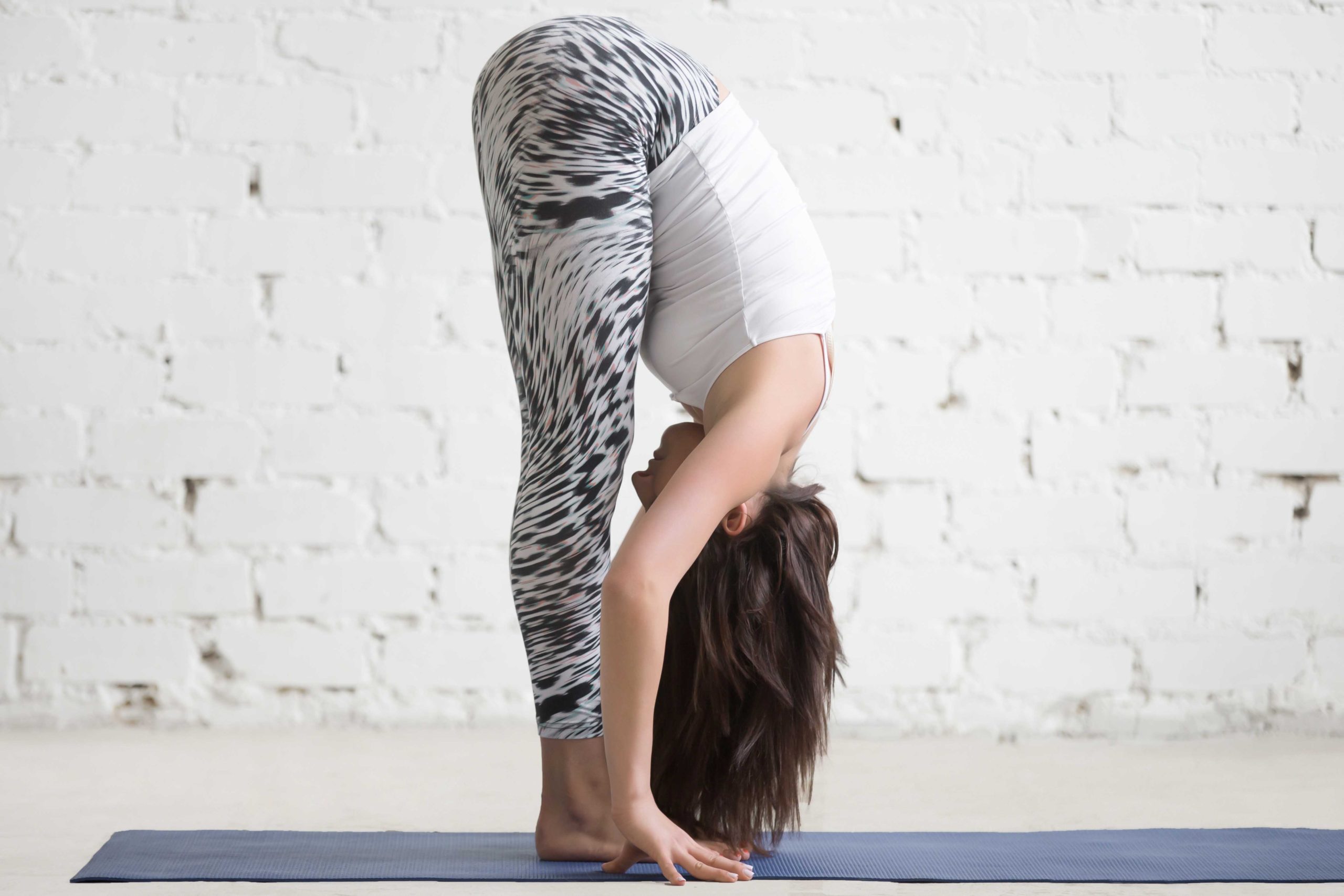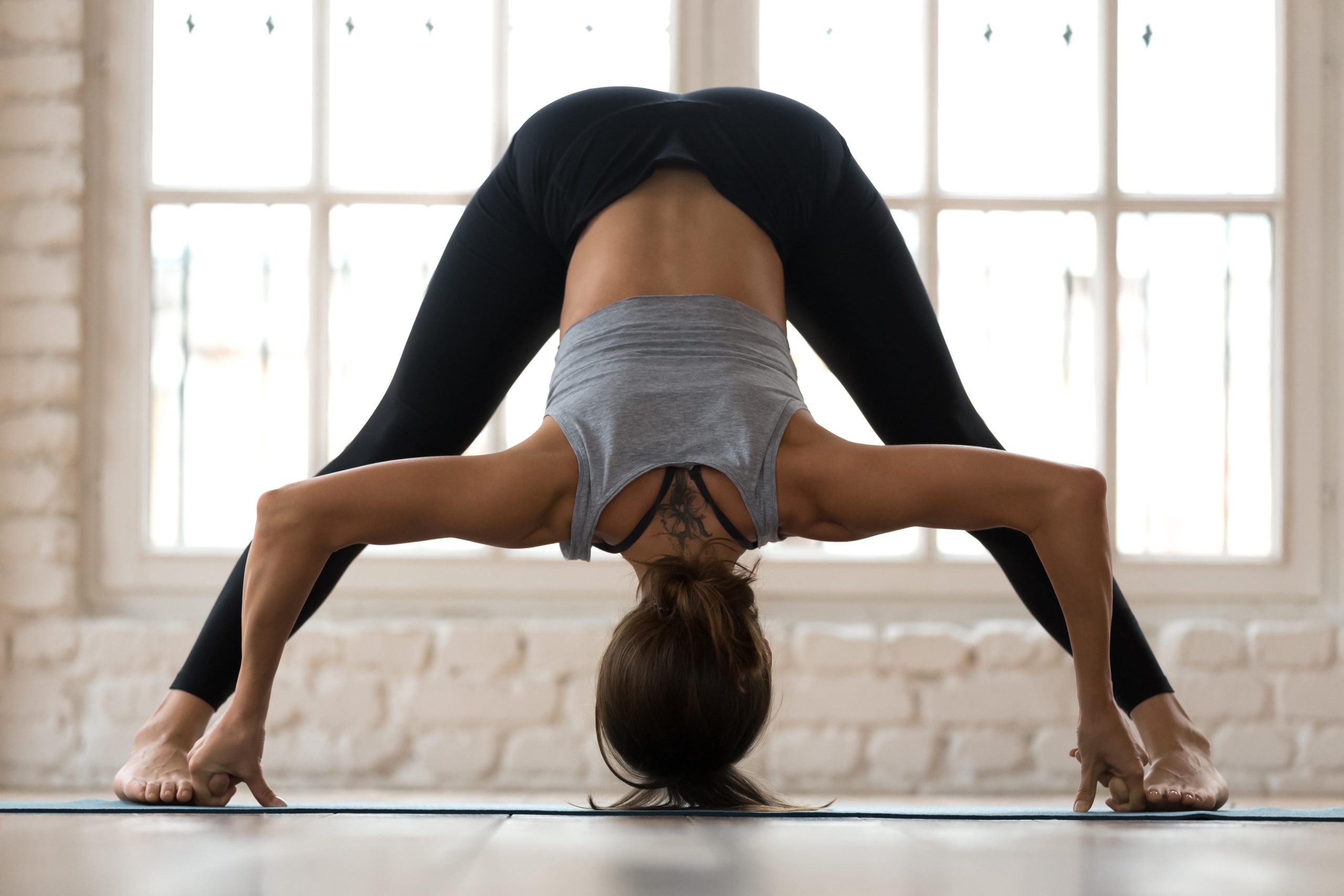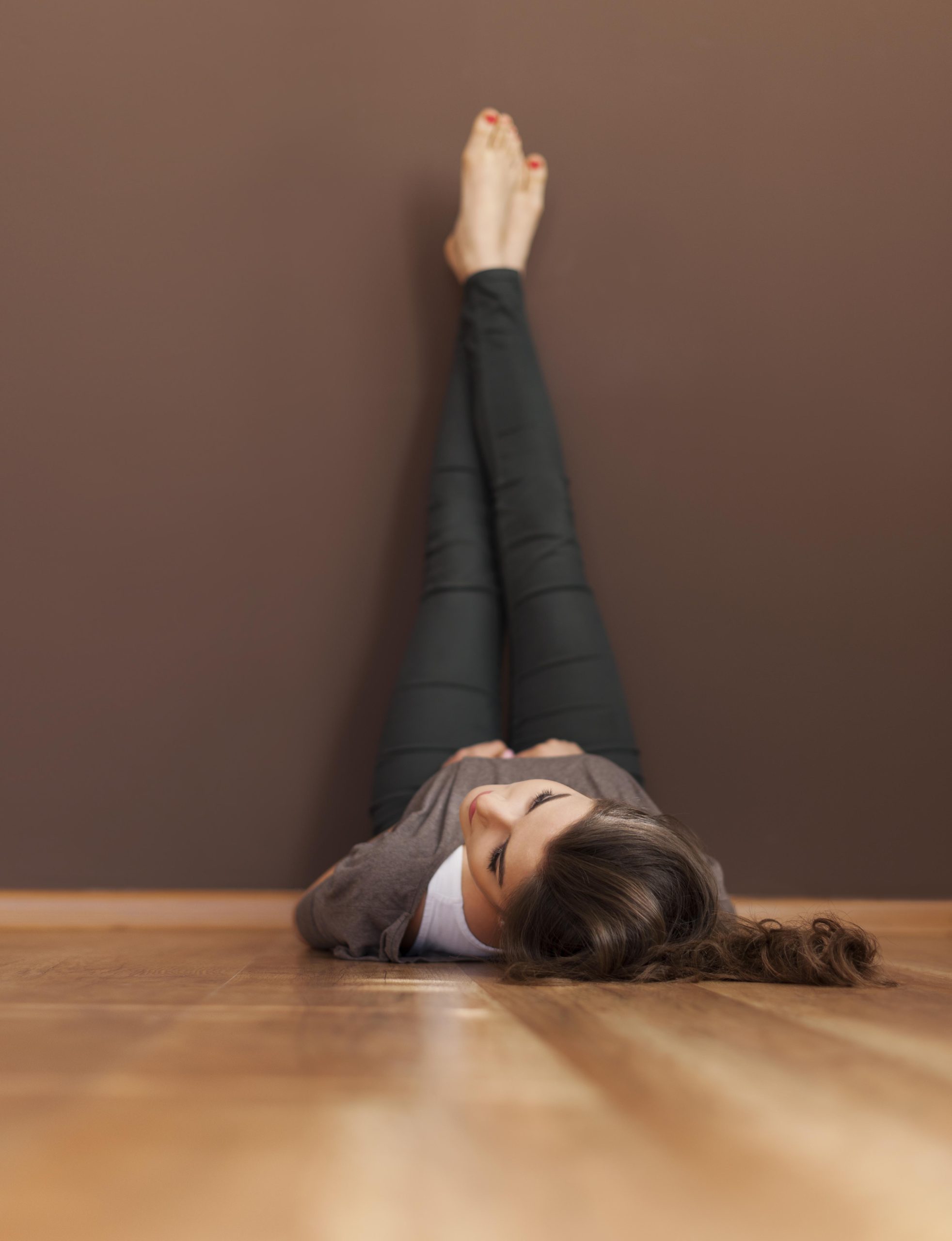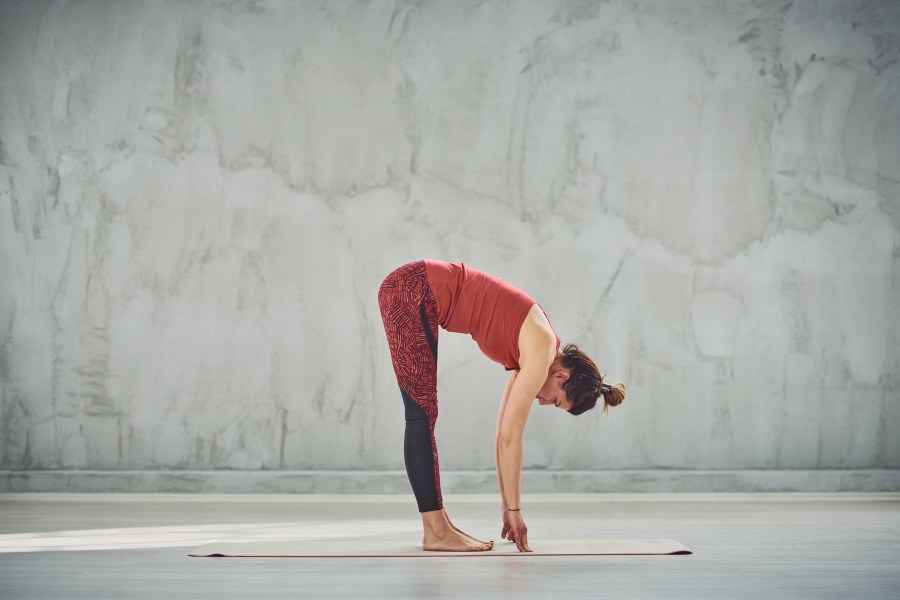Feeling stressed out? Adapt your yoga practice to ease anxiety and find inner calm with these top tips…
By Eve Boggenpoel (Photos: Getty Images)
Few of us have escaped moments of anxiety over the past 18 months. Even without the pandemic, everyday challenges such as juggling work and family often leave us feeling stressed or uncertain.
With research showing just 12 yoga sessions can significantly improve your mental health, how can getting on your mat help you?
‘Yoga drops you into the here and now, and into a feeling of connection with your breath, your body and the rest of the world,’ says Kat Farrants, founder of Movement for Modern Life.
And with recent events leaving us cut off not just from the rest of the world, but those closest to us too, feeling more connected can bring a deep sense of contentment and emotional containment.

Adapt your yoga practice to ease anxiety
When it comes to working with issues such as anxiety, Farrants believes the attitude you bring to your practice will be really helpful. ‘I’m a big fan of adapting poses because each of us have such different bodies,’ she says.
The key is to make sure you don’t add stress to an already tense body. ‘In triangle pose, for example, you often see practitioners holding their heads up to the ceiling with their necks tense and arms very strained,’ she explains. ‘They create a lot of tension in trying to reach the pose, but that isn’t going to relax you.’
Modify your forward bends
Forward bends are renowned for calming the mind, but push too hard and they could have the opposite effect, especially if you’re already carrying tension in your body. ‘If I was feeling quite tense and unable to do a seated forward bend, I’d stand with my legs apart and tip forward from the hips, instead,’ says Farrants.
‘And, so that I’m not putting tension into my shoulders by thinking I have to reach my hands to the floor, I might just tip myself forward to the height of a sofa or desk, so it’s a modified down dog.’
Another way to adapt forward bends – essentially poses with deep flexion at the hips – is to invert them, as in legs up the wall pose. Make it even more calming and restorative by placing a block or bolster beneath your buttocks.
Try it with legs together, legs apart and arms by your sides or overhead. Take some time to experiment and find an expression of the pose that is personal to you and, most importantly, is relaxing in the moment you practise it.

Relieve tension in standing poses
Try this with other postures, too. For example, how can you reduce unnecessary tension in standing poses? Often used for grounding (visualise energy or ‘roots’ travelling from your tailbone down the back of your legs and from just below your navel down to the front of your legs, and into the ground), excessive tension in standing postures can be unproductive.
Try releasing your tailbone to the ground, checking your pelvis is in neutral and allowing your weight to sink downwards. Then, as an experiment, keeping your lower body strong and stable but not overly tense, see if you can move your spine and upper body in soft swaying movements.
This will give you a strong sense of being grounded, while feeling free and flexible, too. This can translate mentally as feeling secure and confident, but able to adapt to situations as needed.
Incorporate yoga practices into everyday life to ease anxiety
Working with the breath is another way to incorporate yoga practices into your self-care regime. The way you breathe, especially slowing the breath and lengthening the exhalation, is known to be calming.
However, when you’re feeling particularly anxious, worrying about your breath can cause you to hyperventilate, warns Farrants, so becoming familiar with controlling your breath can be very helpful.

Try intercostal breathing
One way to start a breathing practice is with intercostal breathing. ‘Put your hands either side of your chest where your bra would be and feel the expansion and contraction of the spaces between your ribs as you breathe in and out,’ explains Farrants. ‘It will calm and soothe your nervous system immediately.’
As always, start gently and for short periods of time, always taking a break if you begin to feel uncomfortable. Gradually build up the time you practice to two to three minutes. And you can use breath work off the mat, too, whenever your emotions are beginning to have an impact on your everyday activities.
‘If you have thoughts whirring around your head, simply bring yourself back to the breath,’ says Farrants. ‘The breath is probably the most valuable tool we have when we’re anxious.’
Try the MFML yoga for anxiety course
When you’re feeling stressed and under pressure, you need different tools to support you in different ways, which is why we love this comprehensive four-week course. Bringing together a range of teachers and specialists, it offers a multi-disciplinary approach to easing anxiety and promoting wellbeing.
There are articles and audio classes with a psychotherapist; slow, introspective yoga sessions focusing on grounding and working with difficult emotions; classes focusing on self-care, easing anxiety and living in the present moment; plus sessions helping to release physical tension, balance your energy and aid sleep.
Along with this there are specific breath sessions, meditation practices, journaling advice and guidance on checking in with how you’re feeling so you can understand what you need next.
You can take the 28 classes at your own pace and you’ll have lifelong access to the videos. The course is free to MFML members (£15.99 a month) or you can access it separately for £37. Find out more at movementformodernlife.com.







